Weiwei Hu
Option Comparison Network for Multiple-choice Reading Comprehension
Mar 07, 2019
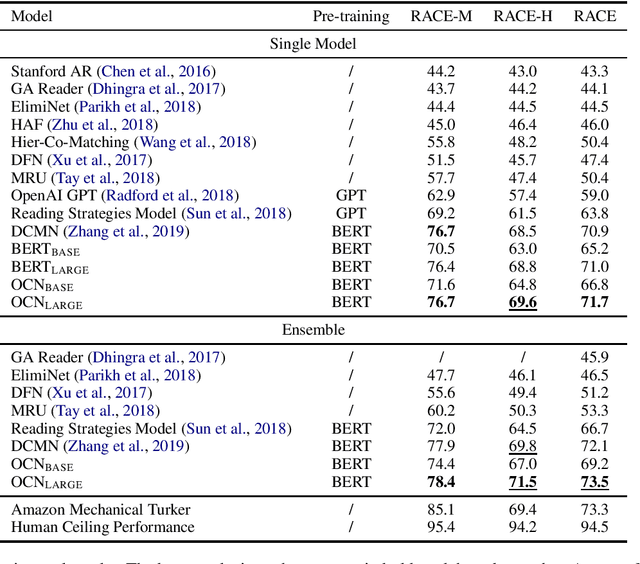

Abstract:Multiple-choice reading comprehension (MCRC) is the task of selecting the correct answer from multiple options given a question and an article. Existing MCRC models typically either read each option independently or compute a fixed-length representation for each option before comparing them. However, humans typically compare the options at multiple-granularity level before reading the article in detail to make reasoning more efficient. Mimicking humans, we propose an option comparison network (OCN) for MCRC which compares options at word-level to better identify their correlations to help reasoning. Specially, each option is encoded into a vector sequence using a skimmer to retain fine-grained information as much as possible. An attention mechanism is leveraged to compare these sequences vector-by-vector to identify more subtle correlations between options, which is potentially valuable for reasoning. Experimental results on the human English exam MCRC dataset RACE show that our model outperforms existing methods significantly. Moreover, it is also the first model that surpasses Amazon Mechanical Turker performance on the whole dataset.
Black-Box Attacks against RNN based Malware Detection Algorithms
May 23, 2017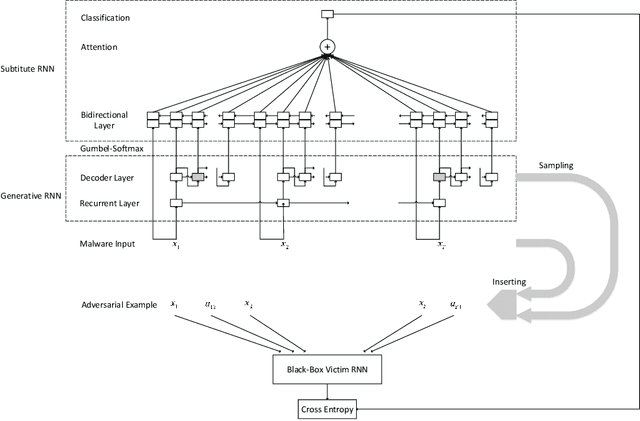
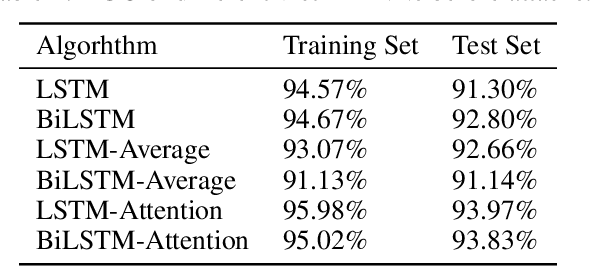
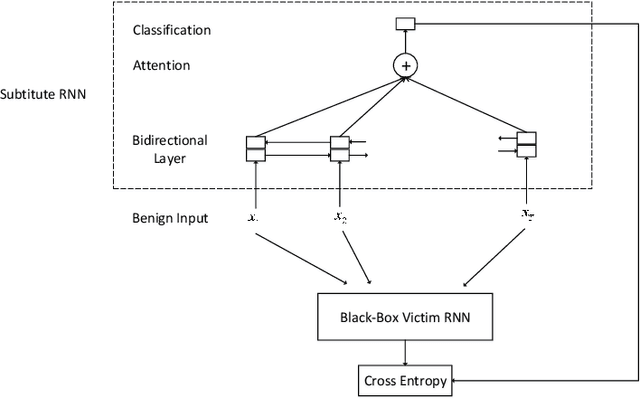
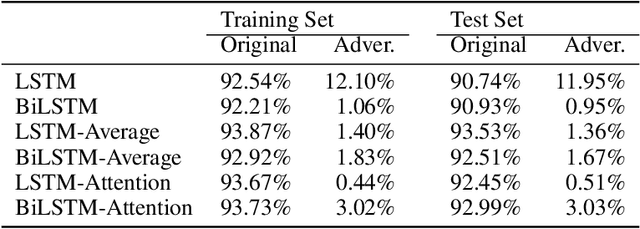
Abstract:Recent researches have shown that machine learning based malware detection algorithms are very vulnerable under the attacks of adversarial examples. These works mainly focused on the detection algorithms which use features with fixed dimension, while some researchers have begun to use recurrent neural networks (RNN) to detect malware based on sequential API features. This paper proposes a novel algorithm to generate sequential adversarial examples, which are used to attack a RNN based malware detection system. It is usually hard for malicious attackers to know the exact structures and weights of the victim RNN. A substitute RNN is trained to approximate the victim RNN. Then we propose a generative RNN to output sequential adversarial examples from the original sequential malware inputs. Experimental results showed that RNN based malware detection algorithms fail to detect most of the generated malicious adversarial examples, which means the proposed model is able to effectively bypass the detection algorithms.
Generating Adversarial Malware Examples for Black-Box Attacks Based on GAN
Feb 20, 2017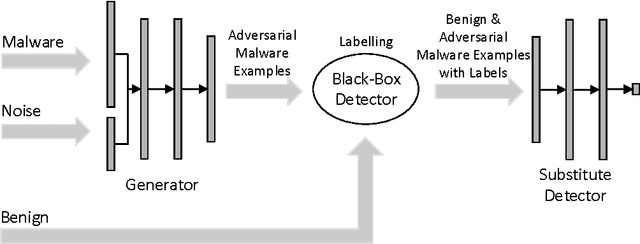
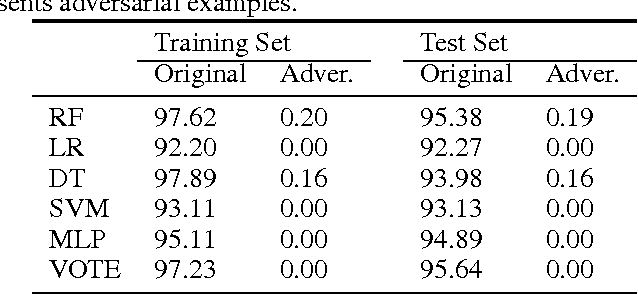
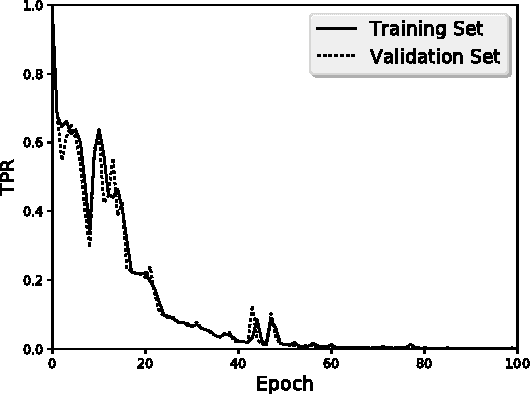
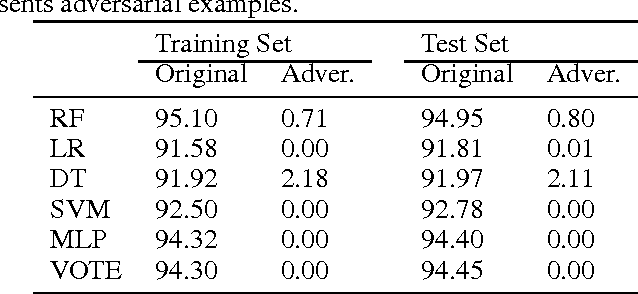
Abstract:Machine learning has been used to detect new malware in recent years, while malware authors have strong motivation to attack such algorithms. Malware authors usually have no access to the detailed structures and parameters of the machine learning models used by malware detection systems, and therefore they can only perform black-box attacks. This paper proposes a generative adversarial network (GAN) based algorithm named MalGAN to generate adversarial malware examples, which are able to bypass black-box machine learning based detection models. MalGAN uses a substitute detector to fit the black-box malware detection system. A generative network is trained to minimize the generated adversarial examples' malicious probabilities predicted by the substitute detector. The superiority of MalGAN over traditional gradient based adversarial example generation algorithms is that MalGAN is able to decrease the detection rate to nearly zero and make the retraining based defensive method against adversarial examples hard to work.
 Add to Chrome
Add to Chrome Add to Firefox
Add to Firefox Add to Edge
Add to Edge